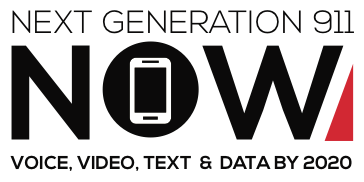Dorothy Jones is a 75 year-old diabetic attending her grandchild’s birthday party in rural Rockville County, PA. Despite inclement weather and approaching darkness, Dorothy ignores the wishes of her family and friends, and decides to head home that same evening. “Don’t worry,” says Dorothy, “I’ll take the back roads. And I’ll stay far away from those maniacs on the highway,” reassuring other guests on her way out the door. On a desolate rural road halfway home, however, Dorothy suddenly feels weak and shaky, symptoms she recognizes as a warning of impending insulin shock. She reaches for her purse, which contains her emergency glucose and realized that she left her purse and her cellular telephone at the party.
Dorothy presses the emergency button on her vehicle’s telematics system, which automatically dials a third-party private emergency call center, also known as a telematics call center. Currently, mayday systems do not automatically dial 911, minimizing “false alarms” for 911. Luckily, the car is not resting in a wireless “dead zone,” and her call can be completed through the nearest wireless tower. Upon pressing the button, a voice channel is opened between the third-party call center and the driver. The telematics call center specialist immediately knows the woman’s name, the operating status and make/model of her vehicle, and her exact location from the Global Positioning System (DPS) satellites or other wireless location technologies. The specialist-a trained call taker-talks with Dorothy, going through a comprehensive protocol to determine what has happened.
With a call established between Dorothy and the telematics service provider (TSP), the specialist initiates a third-party 911 call. Because it is a third-party call, it is routed based on Dorothy’s location and not the location of the TSP. The call is automatically established as a three-way conference call with Dorothy, the telematics specialist, and the Rockville County 911 Center call taker. The 911 center call taker sees on her screen that the call is a third-party call, and it identifies Dorothy (and her location), as well as the specialist and the TSP. Although located in a different state, the TSP Call Center (as a trusted partner) delivers Dorothy’s voice call, vehicle GPS location information, and other important data via the IP-based emergency services internetwork using established network protocols and communication standards. Working hand-in-hand with the private call center specialist, the 911 call taker notifies and transfers all pertinent response data to the nearest EMS dispatch center, which immediately sends an ambulance to Dorothy’s location. If there had been a crash, other data about the incident would also have been transmitted electronically. Whether Dorothy calls from her vehicle, her handheld cellular telephone, or her home telephone, the system can identify Dorothy as the same person. Dorothy has opted into a database that contains a summary of her medical information, and the call taker can access it directly. In addition, Dorothy’s database entry include a request to automatically notify her son, and the system places a call to her family to notify them of the situation. The son can be automatically added to the conference call if desired. At all times, the victim’s privacy is secure.
As EMS arrives, Dorothy is losing consciousness. The ambulance has no problem locating Dorothy rapidly because the TSP ensures her car’s lights are flashing and periodically sounds the horn. Already aware of Dorothy’s diabetic condition, the paramedic can rapidly evaluate her situation, provide Dorothy with emergency medical care, and transport her to the hospital where her data has been received and reviewed by the medical professionals awaiting her arrival. She is treated and released to her family, who met her at the hospital.
In the NG911 environment, calls from mayday systems like Dorothy’s will be handled more quickly and accurately because the TSP can electronically transfer important data, like GPS coordinates and medical information, directly to the 911 call center. This results in measurable improvements in call processing time, call data accuracy, responder agency response time, and most important, patient outcome.
